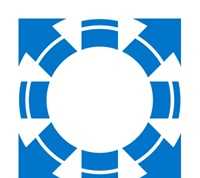Secretary Salazar Approves Three Renewable Energy Projects in California and Nevada
Solar, wind facilities would generate 1,100 megawatts, enough to power more than 340,000 American homes
SAN FRANCISCO, CA – March 14, 2013 – (RealEstateRama) — As part of President Obama’s all-of-the-above energy strategy to continue to expand domestic energy production, Secretary of the Interior Ken Salazar today announced the approval of three major renewable energy projects that, when built, are expected to deliver 1,100 megawatts to the grid – enough to power more than 340,000 homes – and help support more than 1,000 jobs through construction and operations.
The 750-megawatt McCoy Solar Energy Project and 150-megawatt Desert Harvest Solar Farm are both located in California’s Riverside East Solar Energy Zone, an area established through the Western Solar Energy Plan as most suitable for solar development. The 200-megawatt Searchlight Wind Energy Project will be constructed on public lands in Clark County, Nevada.
“These renewable energy projects reflect the Obama Administration’s commitment to expand domestic energy production on our public lands and diversify our nation’s energy portfolio,” Secretary Salazar said. “In just over four years, we have advanced 37 wind, solar and geothermal projects on our public lands – or enough to power more than 3.8 million American homes. These projects are bolstering rural economies by generating good jobs and reliable power and strengthening our national energy security.”
Secretary Salazar made the announcement today in San Francisco with California Governor Edmund G. Brown, Jr. Working together, the State of California and the Department of the Interior have established a unique partnership in support of the state and federal government’s clean energy goals. Since 2009, the aligned federal and state permitting and environmental review processes have advanced 5 gigawatts of wind, solar, geothermal and transmission projects on public lands in California – and more than 15 gigawatts statewide.
Interior and California agencies are also engaged in the Desert Renewable Energy Conservation Plan, a mutual landscape-level planning effort to streamline renewable energy development in appropriate areas in the California desert, while at the same time conserving important natural resources and natural communities for species protection and recovery. A draft of the plan is expected this summer.
Since 2009 – and with today’s projects – Interior has approved 37 renewable energy projects, including 20 utility-scale solar facilities, 8 wind farms and 9 geothermal plants, with associated transmission corridors and infrastructure to connect to established power grids. When built, these projects will provide more than 11,500 megawatts of power, or enough electricity to power more than 3.8 million homes, and support an estimated 13,500 construction and operations jobs.
Additionally, the Bureau of Land Management has identified 23 active renewable energy proposals slated for review this year and next, including 14 solar facilities, 6 wind farms and 3 geothermal plants. The BLM identified these projects through a process that emphasizes early consultation and collaboration with its sister agencies at Interior – the Bureau of Indian Affairs, the U.S. Fish and Wildlife Service, and the National Park Service.
“The President has called for America to continue taking bold steps on clean energy,” said BLM Principal Deputy Director Neil Kornze. “Our Smart-from-the-Start analysis has helped us do just that, paving the way for responsible development of utility-scale renewable energy projects in the right way and in the right places.”
The approved projects underwent extensive environmental review and public comment. The companies agreed to undertake significant mitigation efforts to minimize impacts to wildlife, water, historical, cultural and other resources. State and federal agencies have set up a joint compensation fund operated by the National Fish and Wildlife Foundation to help mitigate impacts. The projects will displace an estimated 800,000 metric tons of greenhouse gases each year (equivalent to more than 150,000 cars), while generating tens of millions of dollars in construction payroll, local housing demand, increased tax revenue and purchases of local goods and services during construction and operation.
The McCoy Solar Energy Project, located about 13 miles northwest of Blythe, CA, was proposed by McCoy Solar, LLC (a subsidiary of NextEra Energy Resources, LLC). The 750-megawatt photovoltaic solar facility would be one of the largest solar projects in the world, and encompass about 7,700 acres of BLM-managed lands and 477 acres of private land. Because the BLM worked closely with the developer to reduce the footprint, the project will occupy only 4,394 acres. McCoy Solar has agreed to purchase more than 4,500 acres of habitat to protect the Desert Tortoise, Burrowing Owl, and Mojave Fringe-toed Lizard species. The project is expected to employ approximately 500 workers during peak construction, and 34 permanent jobs. When operational, the facility would generate enough clean power for an estimated 225,000 homes in southern California. A 12.5-mile generation transmission line would connect the project to Southern California Edison’s Colorado River Substation. Click here for a fact sheet on the McCoy Solar Energy Project and here for a map.
The Desert Harvest Solar Farm, proposed by EDF Renewable Energy (formerly enXco) on a site six miles north of Desert Center, CA, would encompass about 1,208 acres of BLM-managed lands for the 150-megawatt photovoltaic facility. The project would have a peak construction workforce of about 250 employees and create 8 permanent jobs. The facility will use an efficient single-axis tracking technology that allows the solar panel arrays to follow the sun to produce more electricity for the same amount of ground disturbance. The project’s infrastructure will be concentrated with that of a nearby solar project, minimizing new ground disturbance. The BLM added requirements to ensure that the plant will not contribute to overdraft of the local groundwater basin. When operational, the facility would generate enough electricity to power an estimated 45,000 homes in southern California. The project also includes an on-site substation and 230-kilovolt line to the Red Bluff Substation, which will connect the project to the Southern California Edison regional transmission grid. Click here for a fact sheet on the Desert Harvest Solar project and here for a map.
The Searchlight Wind Energy Project will be built on 18,949 acres of BLM-managed land near Searchlight, Nevada, 60 miles southeast of Las Vegas. The permanent footprint of the 200-megawatt project will be approximately 160 acres. The Western Area Power Administration is proposing to construct, operate and maintain a new switching station to connect the project to the existing power grid. When built, the project would provide enough electricity to power about 70,000 homes. The facility would create an estimated 275 peak jobs, 15 full- and part-time operational jobs and generate about $18.6 million in property and sales tax revenue for local government. Click here for a fact sheet on the Searchlight Wind project and here for a map.
For more information on BLM’s approved and pending renewable energy projects, please visit http://www.blm.gov/wo/st/en/prog/energy/renewable_energy.html.
Contacts:
Jessica Kershaw (DOI), 202-208-6416
David Quick (BLM), 202-912-7413















